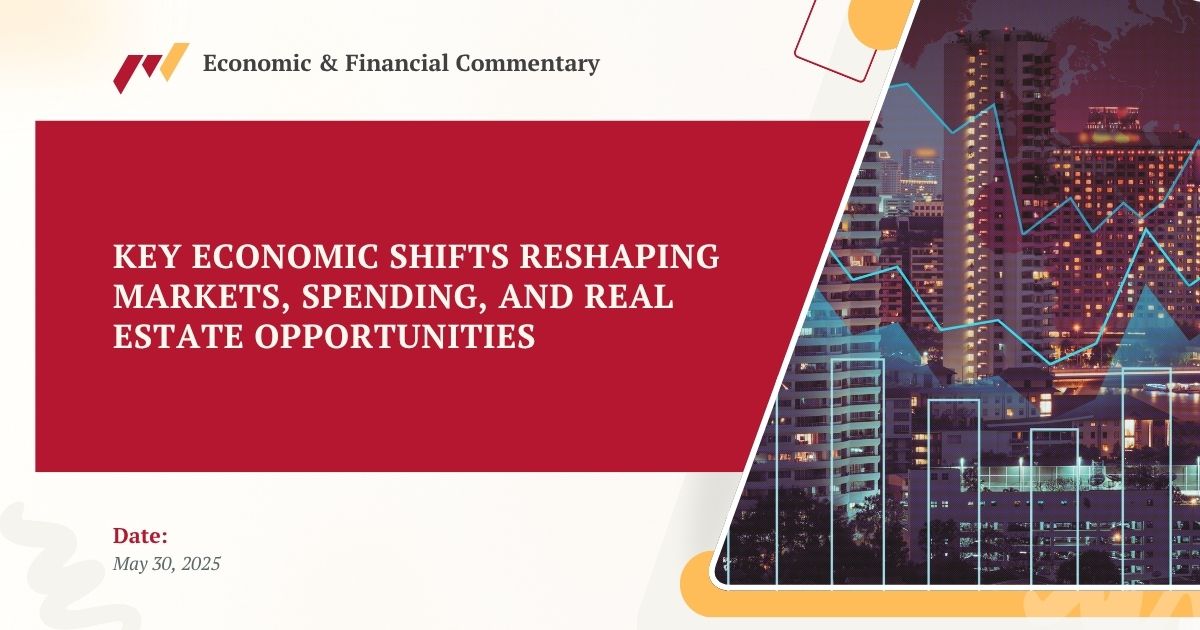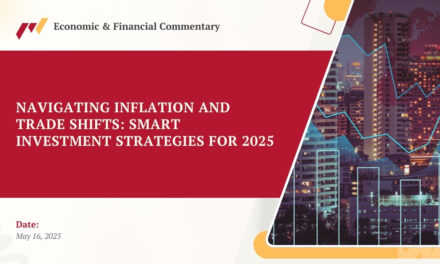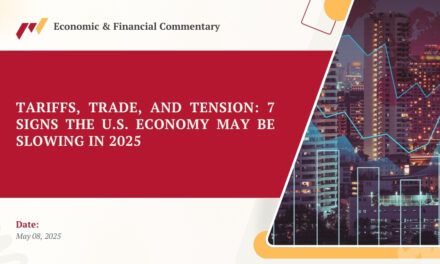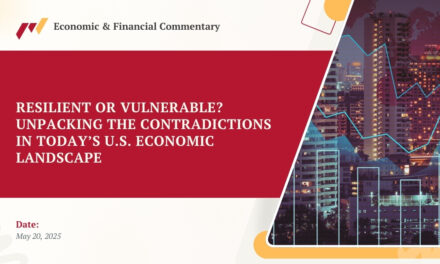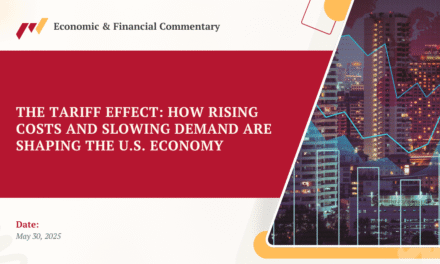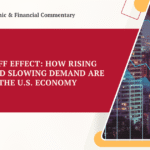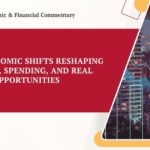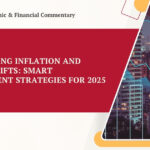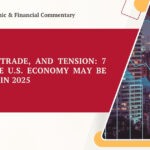Key Economic Shifts Reshaping Markets, Spending, and Real Estate Opportunities
Tariff Ruling Disrupts Trade Policy Direction
A U.S. court blocked several major tariffs enacted under the IEEPA, reducing the effective tariff rate outlook from 14% to an estimated 5%. While this offers temporary cost relief for importers, the future remains uncertain, as alternate tariff mechanisms like Section 122 are still under consideration.
2. Spending Slows but Remains Positive
In April, personal spending rose 0.2%, with strong growth in service sectors like housing, healthcare, and dining. However, spending on tariff-impacted goods weakened. Notably, personal incomes grew 0.8%, buoyed by increased transfer payments and steady wage gains.
3. Inflation Stable—But Pressure May Build
Both headline and core inflation indicators moved just 0.1% higher in April. Core prices are now tracking at a 2.5% annualized rate—close to Fed targets. However, expected rises in goods prices due to tariff reinstatements could complicate inflation control.
4. Mortgage Rates Near 7% Again
Homebuyers continue to face significant affordability challenges. The 30-year mortgage rate climbed to 6.89%—its highest since February. As financing becomes more expensive, pending home sales dropped by 6.3%, wiping out recent gains.
5. Global Performance: Steady in Some, Sluggish in Others
India saw a solid 7.4% YoY GDP growth, led by infrastructure and investment. Brazil continued outperforming its long-term average with 2.9% YoY growth. Canada and Sweden showed mixed data, influencing rate hold expectations. Australia and New Zealand move cautiously toward more rate cuts by Q3.
What This Means for Stakeholders
– Businesses: Watch for trade volatility and build contingency pricing models.
– Investors: Prioritize resilient sectors like services and low-leverage portfolios.
– Real Estate: High financing costs require targeted messaging and creative buyer incentives to sustain sales.
Final Thoughts
Economic signals in May 2025 remain mixed—steady inflation and resilient incomes offer some stability, but tariff uncertainty and rising mortgage rates continue to challenge growth. Staying agile and informed is key as policy shifts and consumer behavior evolve.
This blog is a summary and commentary based on publicly available insights from Wells Fargo’s economic report dated May 30, 2025. All rights belong to the original publisher.

